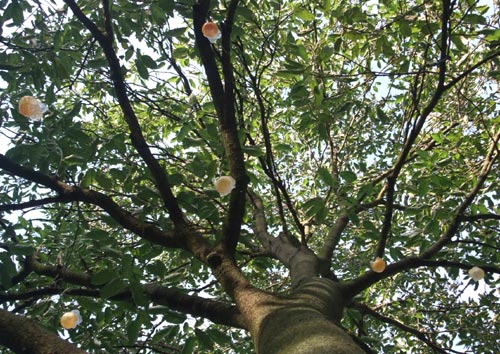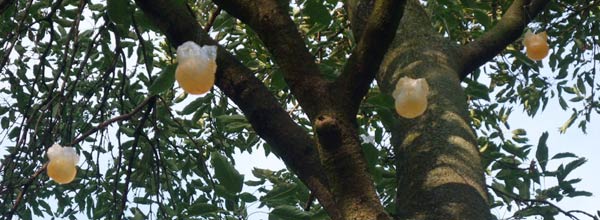![]() >> Sonja's Latest work By Sen + Sonja choose a medium Sculpture Sonja's c.v. The Medium A tour via thumbnail images
>> Sonja's Latest work By Sen + Sonja choose a medium Sculpture Sonja's c.v. The Medium A tour via thumbnail images


Click on the image above for a larger view


Tulpen uit Istanbul
postcard, 15 x 20 cm, 1998.
Published by de Vishal, Haarlem.
These orange tinted tulip forms emphasize how cultural symbols have a history are always in flux. They are a reminder that there is always a give and take involved with any cultural interaction.
The tulip began in China, was cultivated in Turkey, and migrated into Europe out of an Islamic society. In the Netherlands it became a cultural icon and still is today. Likewise with the colour orange: the name originates in France but was imported into the Netherlands via Germany and is the name of the Dutch Royal family, the House of Orange. And the colour orange has become a national icon associated with the Netherlands.
I chose to cast these tulip forms in a material that looks fragile and is transluscent and to suspend them to emphasize the fluidity of the frames we put around things. Two texts are also exhibited with this work:
´It is not a tale invented but a confirmation of what went on before it...´
The Quran
The Dutch House of Orange has reigned since 1572.
The tulip from Turkey gained popularity in West Europe in the early 1600s.
The text from the Quran is a reminder that nothing is entirely original, that new stories come from old ones, and that we (all cultures) are connected.

Installation as part of The TreeTop Gallery, Regents Park, London, 2009.
Curated by Claudia Moseley and Steph Smith. More about this 3 month exhibition on my projects page

Detail of in the exhibition in
Wittem Monastery summer show, The Netherlands, 2015.

The text:
"It is not a tale invented, but a confirmation of what went before it..." comes from a chapter of the Qur'�n which refers to progressive revelation. This is a concept that all religious leaders or prophets come from the same source and are part of the same eternal religion. Here I connect this Moslem and Baha'i view of religion to that cultural symbol. The tulip was never a found object, it came from somewhere, and in this instance, that somewhere was a Moslem society.
Initially I made 50 tulips in 1997 for an exhibition in Villach, Austria and have since exhibited many of these tulips around Europe, sometimes as a group of 5, 9 or more. I changed the concept a bit for 2015 "Wharepuke" art park exhibition so that each of the 19 tulips is then mapped as it is sold. See this page for more details.

Installation as part of The TreeTop Gallery, Regents Park, London, 2009.
Curated by Claudia Moseley and Steph Smith, installations, performances, lectures and workshops took place over a 3 month period.

Installation in The TreeTop Gallery, Regents Park, London, 2009.

Installation in The TreeTop Gallery, Regents Park, London, 2009.


Installation in The TreeTop Gallery,
Regents Park, London, 2009.
The tulips appear to be of glass, and hence fragile, however the diversely tinted orange forms are robust enough to be handled and on close inspection, each is an individual. Each tulip is viewed from the bottom up, sometimes out of reach.


